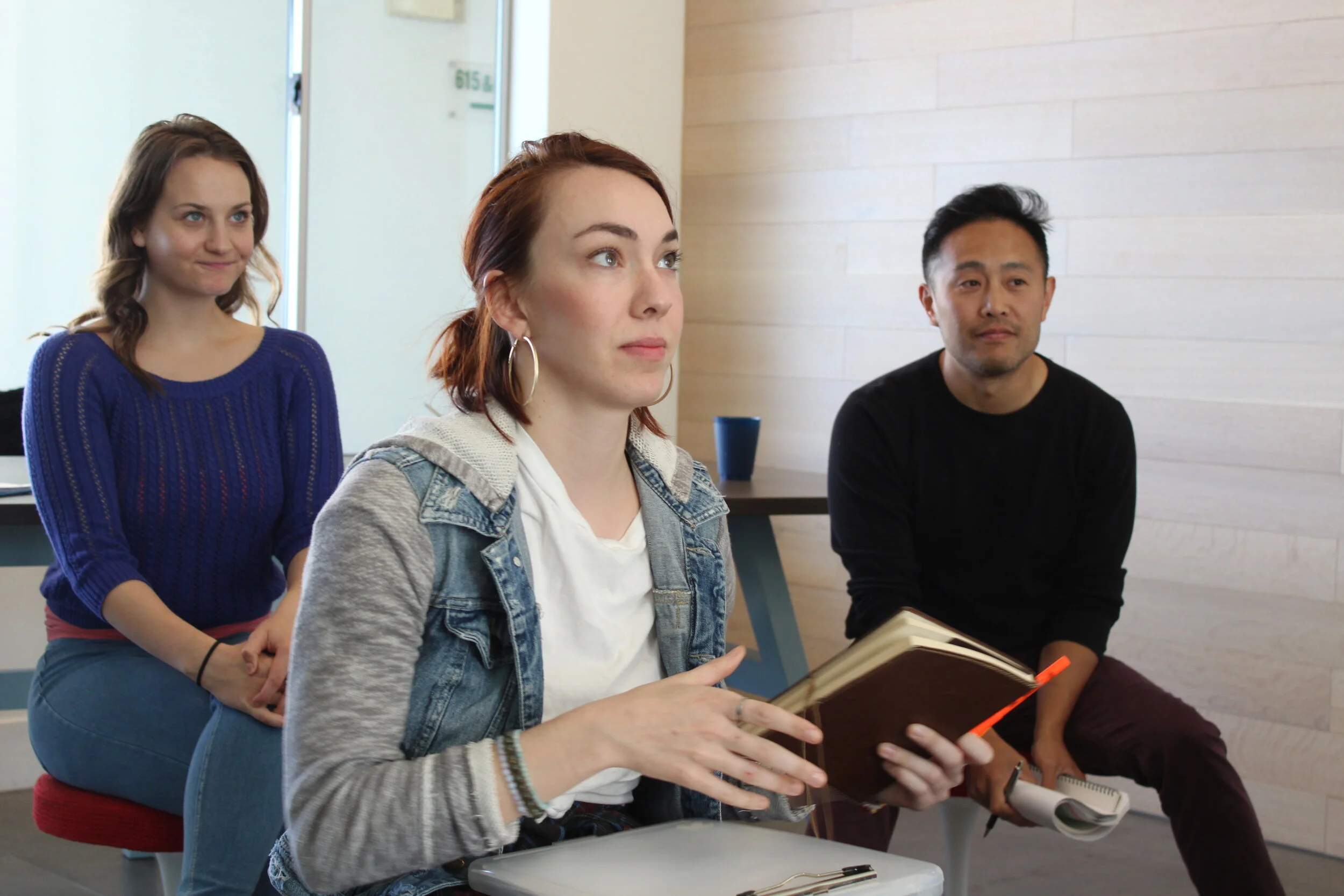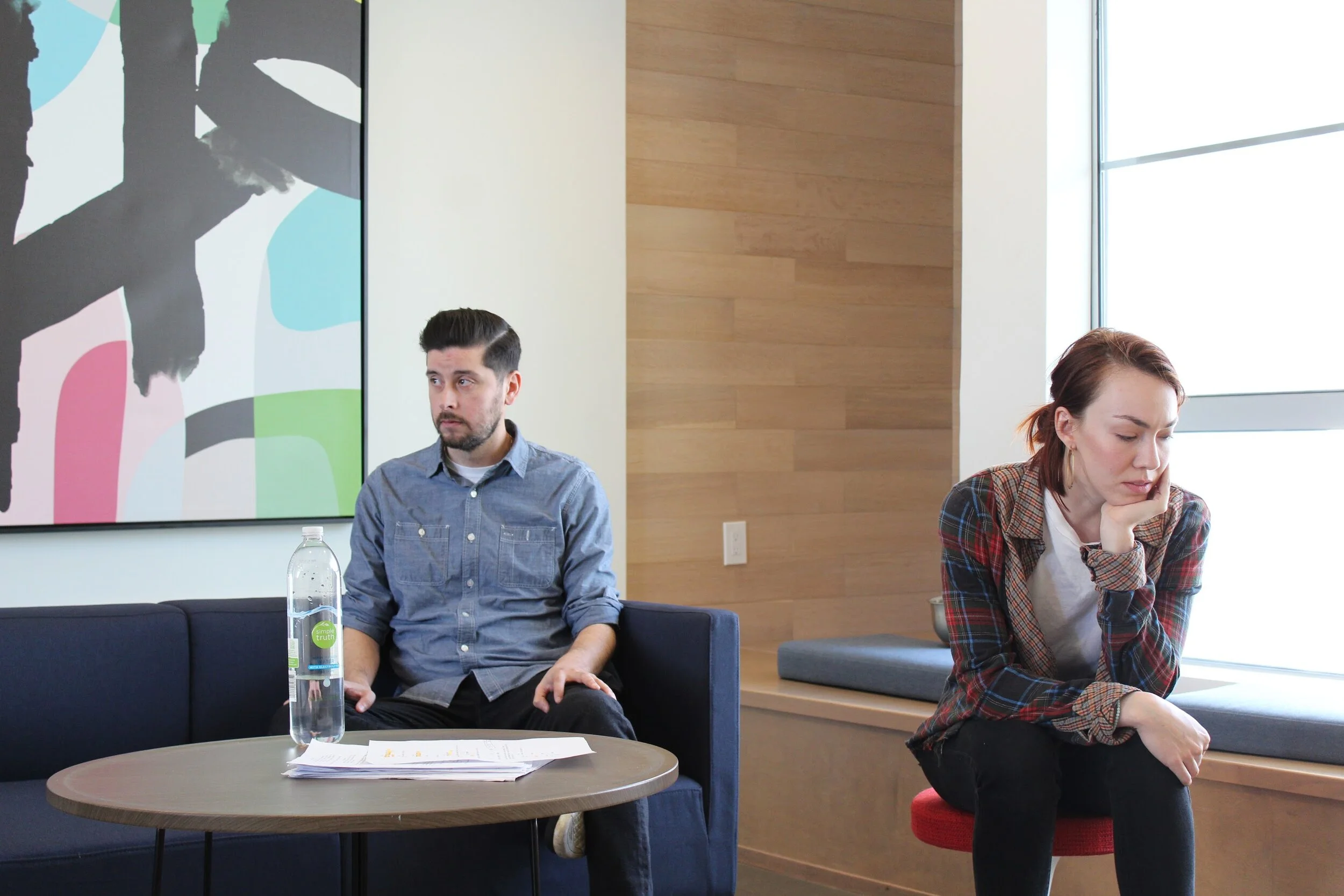The Character’s Journey: Breaking Down a Scene
Where does your character start? Where does your character end?
These questions are the catalyst to my scene work process. Each scene must offer a story-specific journey for the character; a change in perspective that carries into the next scene. The character’s journey is the culmination of the series of actions pursued towards an ultimate goal.
The beginning of scene work is an exploratory period for the actors to discover what the character does and the motivations behind why the character does what they do. I work to create an environment where the actors can explore without judgment; championing their creativity as they continue to experiment and test out options towards building the story we want to tell.
As a director, I promote a culture of creative exploration to find the actions that will tell the most engaging story. The rehearsal process then becomes about how to make each moment interesting and unique to the actors portraying them. As we continue to dig deeper into actions and story, we use the question “where does your character start?” and “where does your character end?” as something we can return to.
These questions serve as a jumping off point for exploration, giving the actors an anchor to ground themselves as we investigate further.
I directed Theresa Rebeck’s Seminar with Flat Tire Theatre Company. A play about four students in a prestigious writing class fighting their way to the top. The talented Lauren Beausoleil played the character of Izzy, a calculated writer accused of sleeping her way to accolades from the instructor.
We begin with the text Rebeck gives us. In the opening scene of the play, Izzy starts with sitting on a couch saying nothing and she ends with taking her top off sharing her plans about the drug whore book she’s writing.
How does Izzy start in Scene 1? How does Izzy end in Scene 1?
Working with Lauren, we hypothesized that Izzy starts with patiently observing her peers in order to size up her competition. Izzy ends by making a statement to establish dominance amongst the group.
With our starting and ending point, we go into our next step with something to test. We then divide the scene into story beats; with each beat containing something the character does (or action) as Izzy journeys from start to end.
Actions are the building blocks of a scene. Knowing our starting and ending points allows us to strategically look at the character’s actions and how each contributes to the storytelling.
Actions are in service to the character’s journey towards their ending point. By lining up the actions chronologically, we can then determine how the actions influence one another and the actions’ function in the storytelling. A change in the action, or change in the story beat or beat change, occurs when a character succeeds/fails in their current action and now must do something different or new information is introduced and now must do something different.
Lauren and I first worked together to determine the starting and ending point for Izzy and then we outlined the story beats of the scene. Now, we identify what Izzy’s action is during each story beat.
Beat 1: What happens: Izzy listens to Douglas describe his time at a prestigious writing retreat and listens to the other characters debate. Action: Izzy wants to gather information.
Beat 2: What happens: Izzy initiates this beat change by asking Douglas what he is working on and she and Kate debate writer Jack Keuorac’s view of women. Action: Izzy wants to size up the competition.
Beat 3: What happens: After challenging Martin and Kate’s relationship history, she compliments Douglas’s story in the New Yorker. Action: Izzy wants to pit the boys against each other.
Lauren and I continue working beat by beat until we get to the final moment of Izzy taking her top off and sharing her plans to publish her drug whore book. By the end of the process, we had a draft of the scene with one potential version of the character’s journey.
Through subsequent passes, we layered in given circumstances, stakes, relationships and point of view - continually enhancing the actions to tell a more rich and vulnerable story.
At one point, Lauren found a brilliant approach to the end of the second beat. She adjusted her action to flirting with Martin which then caused potential love interest Kate to change the subject. Lauren then wanted to test if this approach made the third beat more about asserting dominance over Kate rather than pitting the boys against each other. We did a pass of the scene with the new approach and we ended with something much richer.
During scene work, I use the story beats as guideposts for the actors to begin discovering where the character starts and where the character ends. With the security of having something structural to return to, we can build a room of trust and playfulness to bring out each actor’s unique artistry in creating a layered, robust story.
Cool people mentioned:


